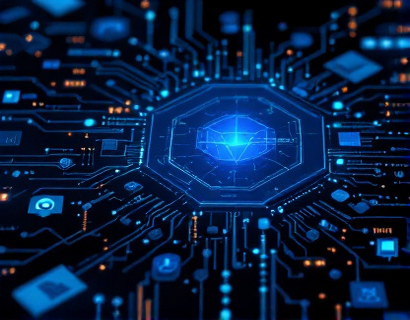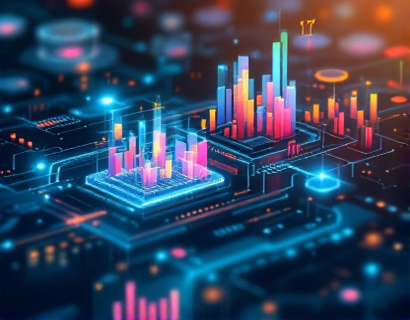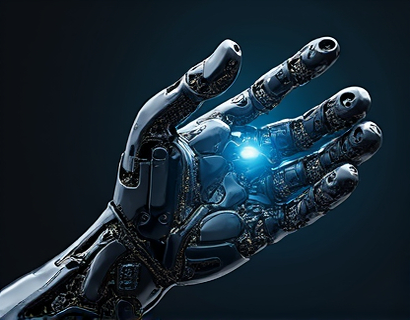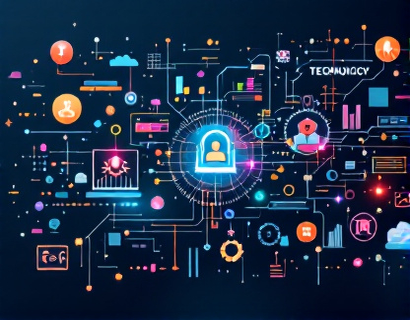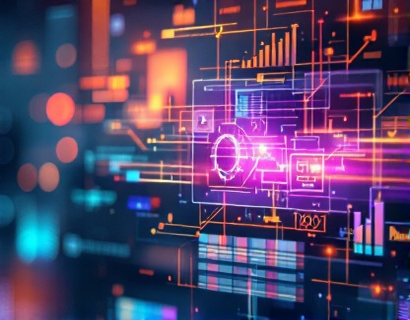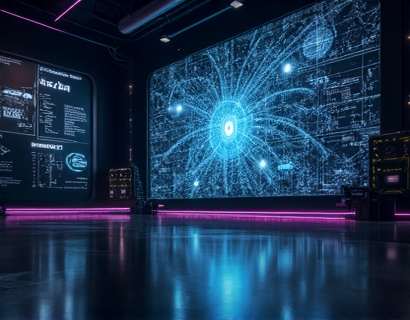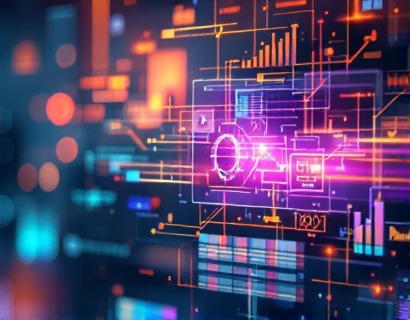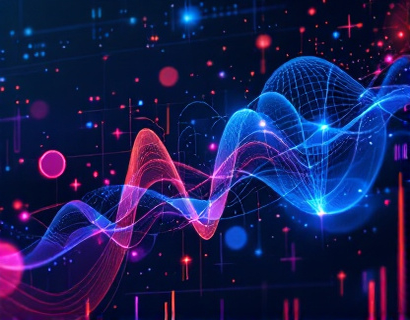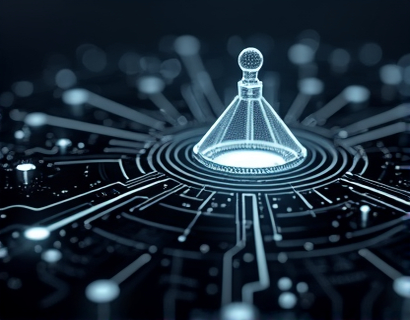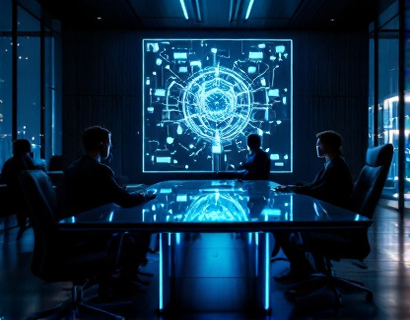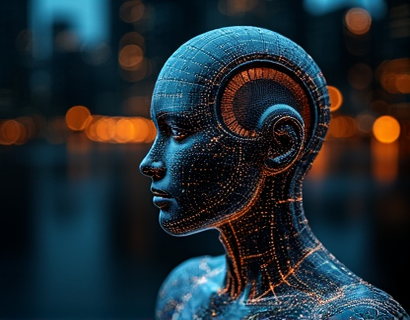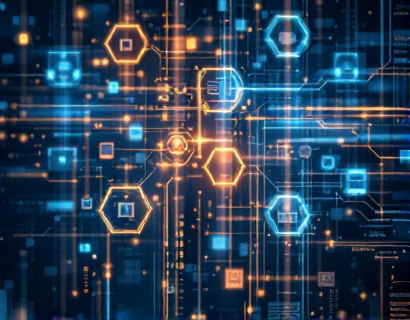Crypto AI Synergy: Advancing Digital Transformation with Next-Gen Tech Solutions
The intersection of cryptocurrency and artificial intelligence (AI) is giving rise to a new era of digital transformation. This fusion is not just a technological curiosity but a powerful force reshaping how applications and services interact. As we delve into this topic, it's essential to understand the fundamental components and the synergistic potential they hold. This article aims to provide a comprehensive overview of how these technologies are converging to unlock unprecedented possibilities in the digital landscape.
The concept of digital transformation has been around for some time, but the integration of cryptocurrency and AI is elevating it to new heights. Traditional digital transformation initiatives focused on automating processes and enhancing efficiency through software and cloud solutions. However, the addition of cryptocurrency and AI introduces a paradigm shift, enabling more secure, decentralized, and intelligent systems. This synergy is particularly significant for tech enthusiasts and professionals who are keen on exploring the future of digital experiences.
Understanding Cryptocurrency and AI
To grasp the crypto AI synergy, it's crucial to first understand the individual technologies. Cryptocurrency, at its core, is a digital or virtual currency that uses cryptography for security. It operates on a decentralized network, typically a blockchain, which ensures transparency and immutability. Bitcoin, launched in 2009, was the first and most well-known cryptocurrency, but since then, thousands of altcoins have emerged, each with unique features and use cases.
Artificial intelligence, on the other hand, refers to the simulation of human intelligence in machines that are programmed to think and learn. AI encompasses various subfields, including machine learning, natural language processing, and computer vision. These technologies enable machines to perform tasks that traditionally required human intervention, such as data analysis, decision-making, and predictive modeling.
The convergence of cryptocurrency and AI is creating a powerful toolkit for developers and businesses. By combining the security and decentralization of blockchain with the intelligence and adaptability of AI, new applications and services are being born. These applications are not only more secure and efficient but also capable of learning and evolving over time, adapting to user needs and market conditions.
Decentralized Applications (DApps)
One of the most prominent outcomes of the crypto AI synergy is the development of Decentralized Applications, or DApps. Unlike traditional web applications, DApps run on a blockchain network, which means they are not controlled by any single entity. This decentralization enhances security and reduces the risk of censorship or manipulation. AI enhances DApps by providing intelligent functionalities, such as personalized user experiences, predictive analytics, and automated decision-making.
For instance, a DApp for financial services can use AI to analyze market trends and provide real-time investment advice. The decentralized nature of the app ensures that the data and transactions are secure and transparent, while AI algorithms optimize the investment strategies based on user preferences and market conditions. This combination not only improves the reliability of the service but also empowers users with more control and insights.
Smart Contracts and AI Optimization
Smart contracts are self-executing contracts with the terms of the agreement directly written into code. They run on blockchain networks and automatically enforce and execute the terms when predefined conditions are met. AI can significantly enhance the functionality of smart contracts by adding layers of intelligence and adaptability.
Imagine a smart contract for supply chain management that uses AI to predict and mitigate risks. The AI can analyze historical data, weather patterns, and other relevant factors to forecast potential disruptions. When a risk is identified, the smart contract can automatically trigger compensatory actions, such as rerouting shipments or adjusting payment terms. This level of automation and intelligence not only streamlines processes but also reduces the need for intermediaries, lowering costs and increasing efficiency.
Enhanced User Experiences through AI-Driven Interfaces
The integration of AI in user interfaces (UIs) is revolutionizing how users interact with digital services. AI-powered UIs can adapt to individual user preferences and behaviors, providing a more personalized and intuitive experience. For example, a digital assistant integrated with AI can learn a user's habits and preferences over time, offering tailored recommendations and automating routine tasks.
In the context of cryptocurrency, AI-driven UIs can simplify complex financial operations. A user can interact with a crypto wallet that uses natural language processing to understand voice commands or text inputs, making transactions more accessible and user-friendly. Additionally, AI can enhance security by detecting and preventing fraudulent activities through anomaly detection and behavioral analysis.
Data Analytics and Decision-Making
Data analytics is a critical component of both cryptocurrency and AI. The vast amounts of data generated by blockchain transactions and AI algorithms can be harnessed to gain valuable insights. AI-driven analytics tools can process and analyze this data to identify patterns, trends, and correlations that would be impossible for humans to detect manually.
For businesses, this means better-informed decision-making. By leveraging AI to analyze market data, consumer behavior, and operational metrics, companies can optimize their strategies and stay ahead of the competition. In the crypto space, traders and investors can use AI to analyze market data, predict price movements, and automate trading strategies, leading to more profitable outcomes.
Security and Trust through Blockchain and AI
Security is a paramount concern in the digital age, and the combination of blockchain and AI offers robust solutions. Blockchain's inherent security features, such as cryptographic hashing and decentralized consensus, ensure that data is tamper-proof and transparent. AI complements this by enhancing security through advanced threat detection and response mechanisms.
AI can monitor blockchain networks in real-time, identifying and mitigating potential security threats before they become problematic. Machine learning algorithms can detect unusual patterns or behaviors that may indicate a security breach, allowing for swift action to be taken. This synergy not only protects sensitive data but also builds trust among users, who are more likely to adopt and engage with secure and reliable digital services.
Challenges and Considerations
While the crypto AI synergy offers immense potential, it also comes with challenges that need to be addressed. One of the primary concerns is the regulatory landscape. The decentralized nature of cryptocurrency and the complex algorithms of AI make it difficult for regulators to enforce laws and standards. This uncertainty can hinder adoption and innovation, requiring a balanced approach that fosters growth while ensuring compliance and consumer protection.
Another challenge is the technical complexity involved in integrating these technologies. Developers need a deep understanding of both blockchain and AI to create effective and secure applications. This requires significant investment in research and development, as well as a skilled workforce capable of navigating the intersection of these fields.
Additionally, there are ethical considerations to keep in mind. The use of AI in decision-making processes must be transparent and fair to avoid biases and discrimination. Ensuring that AI systems are accountable and explainable is crucial for maintaining trust and ethical standards.
Future Prospects
Looking ahead, the crypto AI synergy is poised to drive further innovation and transformation. As technology advances, we can expect more sophisticated applications and services that leverage the strengths of both blockchain and AI. Here are some potential future developments:
- Decentralized Finance (DeFi) Enhancements: AI can optimize DeFi protocols, improving lending, borrowing, and trading processes. Smart contracts with AI capabilities can automate complex financial operations, reducing costs and increasing efficiency.
- Internet of Things (IoT) Integration: Combining blockchain and AI with IoT can create secure and intelligent networks of devices. AI can analyze data from IoT sensors to optimize resource usage and predict maintenance needs, while blockchain ensures data integrity and security.
- Enhanced Cybersecurity: The fusion of blockchain and AI can lead to more advanced cybersecurity solutions. AI can detect and respond to threats in real-time, while blockchain provides a secure and transparent record of all activities, making it harder for attackers to manipulate data.
- Personalized Health and Wellness: AI-driven health applications on blockchain platforms can offer personalized medical advice, track health data securely, and facilitate seamless sharing of information between healthcare providers. This can lead to more effective and patient-centered care.
These advancements highlight the transformative potential of the crypto AI synergy. As the technology continues to evolve, it will open up new possibilities for businesses, developers, and users alike, shaping the future of digital experiences.



